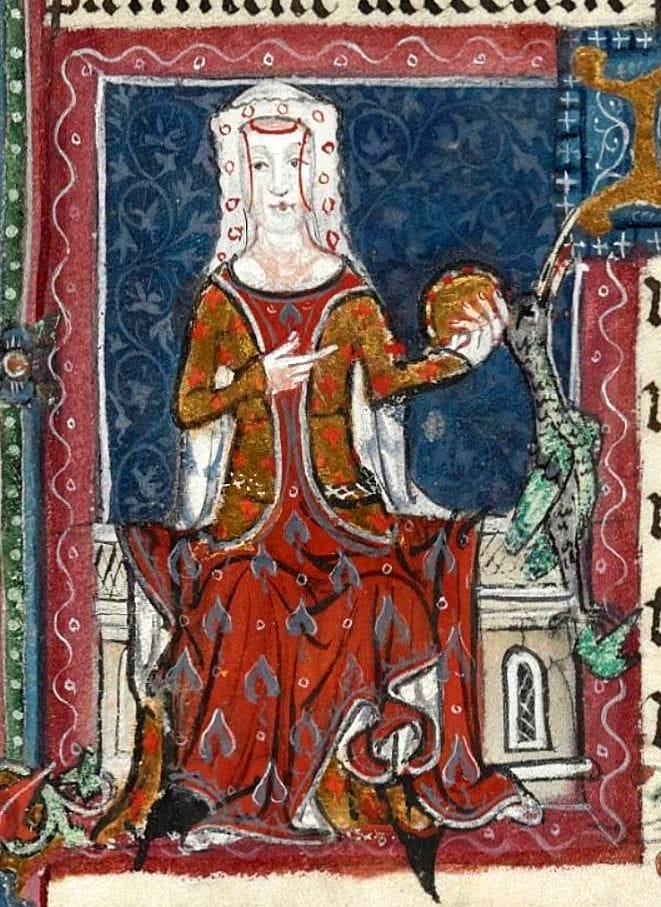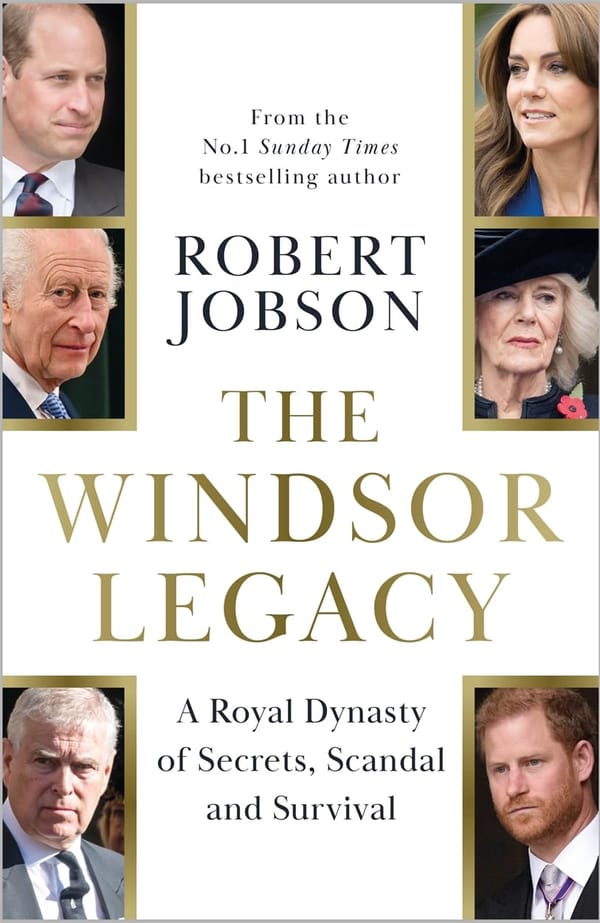Crown & Influence: Joan of Kent - The Fair Maid Who Married for Love

England's most beautiful woman navigated scandal and secret marriages to become Princess of Wales and mother of a king
In an age when royal marriages were political transactions and women had little say in their own fates, Joan of Kent did the unthinkable—twice. She married for love, not once but two times, creating scandals that rocked the English court and required papal intervention to resolve. Yet this beautiful, willful woman not only survived the controversies but thrived, becoming Princess of Wales through marriage to the Black Prince and eventually mother to King Richard II. Joan's life is a remarkable story of personal agency in medieval England, of beauty wielded as power, and of how one woman's romantic choices shaped the course of the Plantagenet dynasty.
Royal Blood and Early Scandal
Joan was born in 1328, and her pedigree was impeccable if complicated. Her father was Edmund of Woodstock, Earl of Kent and youngest son of Edward I. Her mother, Margaret Wake, was a great-granddaughter of Henry III. This made Joan a granddaughter of Edward I and a cousin to King Edward III. She was, in the language of the time, "of the blood royal"—close enough to the throne to matter, far enough that she wasn't seen as a direct threat.
But Joan's early life was marked by tragedy. When she was less than two years old, her father was executed for treason. Edmund had been caught up in a plot to restore Edward II (who most people thought was dead but whom Edmund believed was still alive and imprisoned). The execution was politically motivated and widely seen as unjust. Joan grew up as the daughter of a traitor, a stain on her otherwise royal lineage.
Despite this shadow, Joan was welcomed at the court of Edward III and his queen, Philippa of Hainault. She grew up among the royal children, including young Edward, Prince of Wales (later known as the Black Prince). And it was at court that Joan developed the beauty that would make her famous. Chronicles called her "the Fair Maid of Kent"—she was considered one of the most beautiful women in England, with admirers throughout the nobility.
The Secret Marriages
At age twelve, around 1340, Joan was married to William Montagu, heir to the Earl of Salisbury, in what seemed a suitable match for a young woman of royal blood. But there was a problem—a secret that would eventually emerge and create one of medieval England's greatest marital scandals.
Before marrying Montagu, Joan had secretly entered into a precontract of marriage with Thomas Holland, a household knight. In medieval canon law, such a precontract constituted a valid marriage, even without a church ceremony. Joan and Holland had exchanged vows privately, making their union legally binding in the eyes of the Church, even though it was unconsummated and unknown to Joan's family.
Why did Joan make this secret commitment? The sources don't tell us directly, but it's clear that Joan and Holland had a genuine attachment. He was not a great lord—just a knight seeking his fortune—but Joan chose him anyway. When her family arranged her marriage to the much more suitable Montagu, Joan went through with it, perhaps under pressure, perhaps uncertain about the validity of her precontract. Holland, meanwhile, left to seek his fortune in the Hundred Years' War.
For several years, Joan lived as Lady Montagu. She and William had no children, which later sources suggested might have been because Joan refused to consummate the marriage, knowing herself to be bound to another. Then, in 1347, Thomas Holland returned to England, wealthy from his military service and now a knight banneret. He immediately claimed Joan as his wife.
What followed was a protracted legal battle. Holland petitioned the Pope, arguing that his precontract with Joan constituted a valid marriage and that her marriage to Montagu was therefore invalid. Joan supported Holland's claim—an extraordinary move that suggests genuine affection, as it would have been much easier to simply remain Lady Montagu. Montagu fought the case, but in 1349, the Pope ruled in Holland's favor. Joan's marriage to Montagu was annulled, and she was declared to be Thomas Holland's lawful wife.
The scandal must have been immense. Joan had lived as one man's wife while legally married to another. She had chosen a relatively minor knight over an earl's heir. She had defied social conventions and her family's arrangements. Yet Joan didn't seem to care about the scandal. She and Holland married publicly and began a family, eventually having five children together.
Thomas Holland prospered under Edward III, becoming Earl of Kent (the title had been restored to Joan's family) and gaining wealth and honors. By all accounts, Joan and Thomas's marriage was happy. He fought in France while she managed their estates and raised their children. It seemed a successful love match.
Then, in 1360, Thomas Holland died suddenly while on campaign. Joan, at thirty-two, was a wealthy widow with five young children and a scandal in her past. Most women in her position would have accepted whatever marriage their family arranged next. Joan had other ideas.
The Princess of Wales
Edward, the Black Prince—eldest son of Edward III and the greatest warrior of his generation—had known Joan since childhood. He was also her cousin. In 1361, little more than a year after Holland's death, Edward and Joan married. It required papal dispensation due to their close blood relationship, but the Pope granted it.
Why did the Black Prince marry Joan? Certainly, her beauty was legendary. But Edward could have had his pick of European princesses, marriages that would bring diplomatic advantages and alliances. Instead, he chose his cousin, a widow with five children and a scandalous romantic history. The conclusion is inescapable: Edward married Joan for love.
The marriage made Joan Princess of Wales, the highest-ranking woman in England after Queen Philippa. It was a remarkable ascent for a woman who had twice defied convention to marry as she chose. Joan brought her five Holland children into the royal household, and she and Edward had two sons of their own, including Edward of Angoulême (who died young) and Richard of Bordeaux, the future Richard II.
As Princess of Wales, Joan accompanied Edward to Aquitaine, where he served as his father's lieutenant. She witnessed his triumph at the Battle of Nájera in Spain and experienced the beginning of his decline. The Black Prince had been England's greatest hero, but campaign in Spain damaged his health permanently. He contracted dysentery or some similar illness and never fully recovered.
The Dowager Princess
When the Black Prince died in 1376, a year before his father Edward III, Joan became a dowager princess with a nine-year-old son who was now heir to the throne. When Edward III died in 1377, Joan's son became King Richard II, making Joan the king's mother—one of the most powerful positions in medieval England.
Joan played a crucial role in Richard's early reign. She was not officially regent—Richard ruled with the guidance of a council—but she had significant influence over her son. Richard was devoted to his mother, and Joan used that devotion to try to guide him through the treacherous politics of his minority.
Joan's finest hour came during the Peasants' Revolt of 1381. When rebel forces under Wat Tyler occupied London and the situation spiraled out of control, Joan maintained her composure. She was at the Tower of London when the rebels broke in and murdered several royal officials. Joan protected her daughter-in-law, the young Queen Anne, and helped arrange the negotiations that led to Richard's dramatic meeting with the rebels at Smithfield.
After the crisis, Joan worked to moderate Richard's revenge, interceding for mercy much as Queen Philippa had done in her day. She couldn't prevent all the executions that followed the revolt, but she may have saved some lives through her intercessions.
The Final Years
Joan spent her final years trying to guide Richard as he matured into kingship. She remained close to her Holland children from her first marriage, working to advance their interests while also supporting Richard. It was a delicate balancing act, and there were tensions between Richard and his Holland half-brothers.
Joan died in 1385 at age fifty-seven. She had outlived both her husbands and seen her son crowned king. She was buried at the Greyfriars Church in Stamford, not at Westminster or Canterbury, suggesting perhaps a final modesty or a desire to be away from the royal spotlight she had occupied for so long.
The Woman Who Chose
Joan of Kent's significance lies not in military victories or political reforms but in something more subtle: her insistence on personal agency in an age that denied women such choice. Twice she married for love rather than political advantage. She endured scandal and social censure to be with the men she chose. In an era when royal and noble marriages were dynastically arranged, Joan's love matches were revolutionary acts.
That Joan got away with it—not just surviving but thriving, ending as Princess of Wales and king's mother—is even more remarkable. She had beauty, certainly, which medieval sources emphasized. But she also had intelligence and political skill. She navigated the complex politics of Edward III's court, maintained her position despite scandal, and used her influence wisely.
Joan also demonstrated that royal women could have romantic desires and act on them. Medieval literature was full of courtly love and romantic longing, but these were supposed to remain in the realm of fiction. Joan brought them into reality, showing that women of her class could be motivated by love rather than purely by duty or political calculation.
Her legacy through Richard II is more complicated. Richard's reign ended in disaster and deposition, and some have blamed Joan's supposedly indulgent mothering for Richard's later tyrannical tendencies. This seems unfair—Richard's problems were complex and had many causes—but it reflects the persistent medieval belief that a mother's influence was decisive in forming a king's character.
Joan of Kent remains one of medieval England's most intriguing figures—a woman who wielded beauty as power, who insisted on marrying for love not once but twice, and who rose from the daughter of an executed traitor to become Princess of Wales and a king's mother. She proved that even in the restrictive world of medieval nobility, a determined woman with sufficient charm and intelligence could shape her own destiny. The Fair Maid of Kent earned her place in history not through the traditional routes of military prowess or political intrigue, but through the revolutionary act of choosing her own path—and making that choice work.




